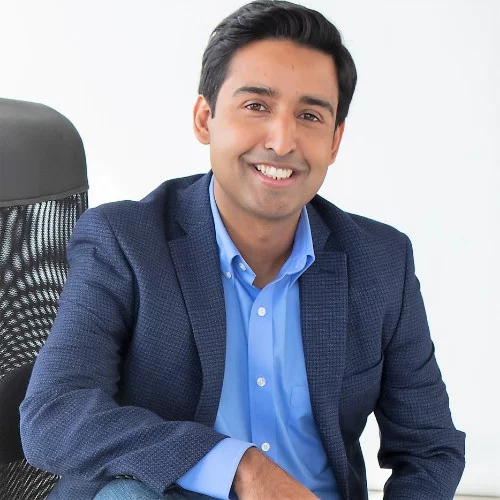Ahead of the IBM CDO Summit on May 1-2 in San Francisco, we have been holding a series of interviews with some of the leading Chief Data Officers and Chief Analytics Officers who will be speaking at the exclusive, free-to-attend event. This time, Corinium’s Chief Data Officer Community Director, James Bowater, spoke to Andrew Sohn, SVP, Global Digital and Analytics Services at Crawford and Company. They discussed emerging technologies such as NLP and blockchain and their impact on business, collaborating with academia, the importance of digital transformation, change management, unlocking value from data through new products and revenue streams, and more.
Andy is responsible for developing and implementing the global data management, analytics and digital innovation strategies for the world’s largest publicly listed independent provider of claims management solutions.
In this role, Andy has lead transformations including enabling new products and revenue streams through data and digital innovations, establishing cradle to grave data management practices to maximize the value and impact of the company’s data assets, as well as implementing comprehensive capabilities for reporting, predictive analysis and advanced techniques such as Machine Learning, Natural Language Processing, Text Mining and Blockchain (DLT). Partnering with universities and other organizations to accelerate.
James Bowater: My first question is, in the modern world technology develops so fast that often it only takes a matter of years to be completely unrecognizable. Which emerging technologies do you think will have a major impact on business in the next one to three years?
Andy Sohn: There are quite a few technologies that are going to change the way we do business and some of the business models themselves. A lot of these are driven by consumers, while some other ones are driven simply by advances of technology. For the past few years, the direction has been mobile first and we are designing solutions for the mobile environment and extending upon that. But voice interfaces and natural language processing are becoming critical and may be becoming a first channel for many of our customers.
A lot of improvements that we’re going to see, especially in the claims and insurance business, are enhancements that will be enabled by improvements in image technology. Taking images by a variety of methods – smartphones, drones, and satellites was just the start. Automatically processing these images with a number of new techniques allows us to capture much more detailed level data. We can then use machine learning and other artificial intelligence processing to derive insights from the images and act upon them. This benefits us in more efficient and accurate processing of claims. It also helps customers even more with a faster resolution of their claims and restoration of lives with less friction.
It is already here, but the internet of everything is really going to increase in importance as it deluges us with much more information than we have ever had before. A lot of the information will be noise, but it will also provide some signals that we will be able to act upon.
The last technology I want to mention is distributed ledger technology, also known as blockchain technology. On the surface it sounds so simple and trivial. However, it has the potential to take a lot of friction out of supply chains, whether it be the information supply chains or the actual physical supply chains. It allows for much deeper and faster integration between parties who know each other and especially for those who do not have an established relationship
Using those technologies will help us with new business models and new business processes that we haven’t been able to do up until now.
James Bowater: I know at the upcoming IBM CDO summit you’re going to be speaking on the topic of battling with blockchain and exploring the potential of distributed databases so I wanted to ask you to elaborate. In your opinion what opportunities does blockchain present and how can we ensure that we are best placed to exploit those?
Andy Sohn: What the blockchain is in its simplest description is an accounting-type ledger where many or all parties in a transaction can have their own copy of the ledger, and they are certain their copy is the same as everyone else’s. One party can’t add or change the data without all copies getting the same information. It sounds simple, but to implement it takes a lot of cryptographic technology, computing power, and even electrical power.
With this ledger technology, you can manage entries that represent anything of value, or that has value itself. The latter is the basis of cryptocurrencies, like Bitcoin. But I’m more focused on the former, where you are just storing the record of the item of value. This is how much of business works these days. Your ownership in your house is stored in a ledger filed with your local government. Your cash and stock assets are stored in a ledger at your bank and brokerage company. You have confidence you own these assets because of official statements received or your ability to query the ledger of record.
I am only going to transfer money into a bank account with a bank that I trust will properly record the money as mine and allow only me to access that money. There are many ways a bank in the U.S. establishes trust. These include reputation, adherence to regulations and memberships in insurance organizations. But even with all that, I am still dependent upon their record keeping. If I disagree, it can be an arduous process to challenge them.
But what if I could transfer my money to any entity that offers me some value for doing so without having any previous relationship or knowledge of that company. Using this technology, I can have trust that the company is who they say they are. But this by itself does not give me the comfort I need. However, if I also have an almost instantaneous, trustworthy assurance from a regulatory body or similar that this company has the proper insurance and credentials, that would provide me with the comfort I need to do business with this bank.
A system like this enabled by blockchain technology will allow companies and individuals to set up relationships much easier than in today’s world. It will also allow for almost instantaneous identification of where there are disagreements between parties. These disagreements can be addressed much more easily in real time, rather than months after the fact.
That opens up a wealth of opportunities within the insurance claims business. A particular transaction can involve many parties. Blockchain presents challenges as well. For a system like this to work efficiently all parties cooperating on this same ledger need to talk the same language, or at least a known language that can be translated by all participants. This is where standards and consortium come in. We are seeing almost every vertical industry establishing these. In the insurance industry, there is the B3i consortium.
Other challenges are the common ones we face when introducing any new technologies. Legacy system are also an obstacle to overcome. Also, data quality issues need to be addressed.
James Bowater: As you said, there are so many different emerging technologies that it’s a very exciting time. Obviously, a lot of these technologies begin on the research side of things. They start in academia and then come over into the business world. So how do you think that businesses should work with academia to help shape the development of technology and ensure that businesses are ready to exploit it?
Andy Sohn: That’s something that I’ve been thinking about for a while. We’ve established some very good relationships with a few universities in the Atlanta area where we are headquartered. It’s a very mutually beneficial situation. In working with these universities, we get access to students and faculty who are knowledgeable in current and emerging technologies and methodologies. They bring new ideas and advance our ability exploit other digital technologies. They also give us a pipeline of talent which we can bring into our business. This relationship gives us an agile way to do research and development without having to make major internal investments ourselves. So that’s a lot of what we get out of the partnership.
In return, we provide the university partners with an understanding of real-world problems that we’re trying to solve and real-world challenges. This way the students can not only learn theory, but how to apply it to the messiness of what corporations actually have to deal with. It’s a very symbiotic relationship that is advancing both of our causes.
James Bowater: I know that a large part of your role is leading digital transformation at Crawford & Company. Why do you think digital transformation is important to large enterprises and what impact can it have on the overall business?
Andy Sohn: We need to be able to meet our clients’ needs for how they want to do business with us. We also need to keep pace with competitor and disrupters in our industry. Customers are expecting many of these newer technologies, such as image processing helped by drones, different channels of customer engagement, automation driven by machine learning and insights powered by advanced analytics techniques. These needs really drive us into new ways of doing businesses and adding value in different ways to our clients.
These transformations allow new types of solutions that give our clients more value than what we have been able to give them in the past. A good example is we now have a service where we are able to inspect claims as part of a gig economy model enabled by our digital technology. This service is called WeGoLook®. It’s a mobile first, highly agile service and platform powered by some exciting technology. We’re also exploring augmented technology as well as connected sensors and other IoT devices. I expect that working in insurance and claims will be very different 10 years from now.
James Bowater: Obviously it’s a very new world in a way, so as you said, that requires a large amount of change within an organization and that means there’s going to have to be a change management process around becoming digital. How do you think that should be managed? Do you think that chief data officers and chief analytics officers should be leading digital transformation or do you think they should be supporting it?
Andy Sohn: There’s a fine line between “the business” and IT, and increasingly in data driven businesses there is no line at all between them. It is almost always an equal effort between the technical staff and the business subject matter experts to drive transformation that have value for clients and grow the business. It’s very much a partnership. This is very important because even in the most technology laden transformation, there’s usually a great deal of business process changes that need to be made and cultural transformations that need to be executed. So, it’s the overall management; not just about technology. It’s looking at the business strategy, the processes and the culture to see how you can become a digitally enabled enterprise or how you can really exploit the advances in digital technology.
James Bowater: We touched on the value piece a little earlier. Obviously, data analytics, digital transformation, they’re only worthwhile to companies if they can deliver real value to the organization. I was just wondering how you have set about demonstrating the value of data to the wider business. Has that been something that’s been easy or difficult, and what steps have you taken there?
Andy Sohn: With a few exceptions to address technical debt, I would say that most of the transformation work that we’ve been doing is directly related to projects or initiatives that create or add value to our clients. It’s been fairly easy in that respect. We’re not just doing these digital transformations for transformation sake, we are looking at opportunities to embed improvements in data analysis, improvements in data insights, and improvements in bringing digital innovations into all of our services. In that respect, it’s been easy to show the value. We are moving the dial from just providing information to our clients to providing actionable insight, as well as action itself, and that is where a lot of our digital investments are going.
James Bowater: What new products and revenue streams has data and digital transformation opened up for Crawford?
Andy Sohn: We have been very successful in a lot of businesses in the past. Our Broadspire TPA business is a clear leader in the industry. We have a division called GCG®, which offers expertise in mass litigation and complex claims. We have another division that offers expertise in property and casualty. We now have the ability to tightly integrate these discrete products into end-to-end solutions. Just this week we are launching two new solutions that leverage this. One is called Recall 360® that addresses any type of recall, large or small. If you are a supermarket that needs to recall a particular vegetable or fruit canned item, there’s a lot more to handling that than just taking the products off the shelf. There could be thousands, or tens of thousands, of people impacted.
With the integration we have achieved, we can help our clients identify the product, take the product off the shelf, handle any claims that come from the consumer’s use of that product, process claims and handle the settlements. The other solution called TruLook® will triage an individual claim upon first notice of loss and guide it through the appropriate adjusting model with the potential to offer clients significant savings through efficiencies. To do this, there’s a lot of integration with these products we talked about and that integration is done through digital technologies. So that’s something that we’re very proud of and is an indicator of some of the new integrated solution sets that Crawford is bringing to the market that are driven or that are enabled by our digital transformation.
James Bowater: You’re right to be proud of that work. My final question then, from within the insurance sector or from outside of it, what do you think is the most innovative use of data that you’ve seen within the previous year?
Andy Sohn: Well, as an analytics professional you have to be begrudgingly impressed by what Cambridge Analytica has done. That was pretty good work but it’s not something I necessarily would be proud of as a citizen of the world. But seriously, I think that some of the work that I’m most proud of, is the work that we have done during the catastrophes that happened in the U.S. and the Caribbean islands this year. We were able to use technology to help restore the lives, businesses and communities of those affected by the hurricanes quickly. We used drones, geospatial information and other analytical techniques to get support to people affected by these catastrophes much quicker than we could in the past. These aren’t really all that innovative, but they are very impactful. Those are ways that we are helping communities with our digital transformations and that’s something I’m very proud of.
James Bowater: I suppose that’s an example of using data and digital technology for the human good rather than perhaps the more ethically questionable work that Cambridge Analytica may have been engaging in previously.
Well, thank you for your time, Andy. I much appreciate it and those are some really great insights that you’ve shared. Thank you very much.
Andy Sohn: You’re quite welcome.








